Ever since I featured a relative of this week’s featured wildflowers three years ago, I’ve been on the hunt for Jewelweed (Impatiens capensis). Sometimes called orange jewelweed or spotted touch-me-not, this plant is native to most of the U.S. and Canada.
Jewelweed thrives in wet habitats: “moist woodlands, partially or lightly shaded floodplains along rivers, edges of woodland paths, swamps, seeps and fens, and roadside ditches.” Anecdotally, less of it is blooming in Iowa this year, due to our unusually dry summer. But a reader tipped me to a large colony of these bright orange flowers at the edge of Greenwood Pond in Des Moines.

The shape and color of jewelweed blossoms are easy to distinguish from all other late summer wildflowers.
I recommend learning to identify the leaves. They appear months before the flowering period and can be an effective itch remedy and anti-inflammatory. The Illinois Wildflowers and Minnesota Wildflowers sites contain botanically accurate descriptions of the foliage.
Jewelweed often grows near poison ivy. I took this picture in early June. On the left, poison ivy. In the middle, foliage for white snakeroot. On the right, leaves of yellow jewelweed, closely related to orange jewelweed.
You can rub the juice from jewelweed leaves on your skin immediately after exposure to poison ivy or stinging nettle, or crush and boil leaves for a poultice. Kim Cornick has some yellow jewelweed growing in her yard. She told me that even though she doesn’t react to poison ivy, she keeps a concoction handy during the summer for friends and family who may need it.
I use my food processor to grind the cleaned young leaves and stems to a pulp, then mix with witch hazel as a preservative. Keeps in the fridge for a couple weeks, and is easily applied with a cotton ball.
Thankfully, I haven’t been exposed to poison ivy since I learned about jewelweed, so I just enjoy the view. A couple of plants with flowers and buds:
The Minnesota Wildflowers site explains the differences between this plant and yellow jewelweed.
Spotted Touch-me-not and Pale Touch-me-not (Impatiens pallida) are similar species, but the latter is overall a larger plant with noticeably larger, yellow flowers, the spur on its flower is much shorter, and has fewer flowers per plant. When I first came upon a Spotted Touch-me-not that didn’t have spots I thought it might be Pale Touch-me-not, but that was not the case. Once you see both plants you can immediately see the difference in the flower size.
Here’s more orange jewelweed near Greenwood Pond:
Two pictures of yellow jewelweed blooming along the Windsor Heights trail (you can find more along the Urbandale trail, east of 86th St):
The Illinois Wildflowers site notes that both kinds of jewelweed “have attractive foliage and large interesting flowers that bloom over an extended period of time.” In this shot you can see unopened buds, blossoms at their peak, and one flower past its prime.
The common name “touch-me-not” was inspired by fruit, “a thin pod about 1 inch long that pops open at the slightest touch, throwing seeds in all directions.” This jewelweed plant has seed pods forming to the left and above the flowers in the center of the picture:
A closer look at some seed pods:
I’ve never seen a hummingbird sampling nectar from jewelweed, though apparently they like these wildflowers. I did find one caterpillar on a plant near the pond. Brenda Doyle later informed me that it was an Isabella Tiger Moth or Banded Woolybear.

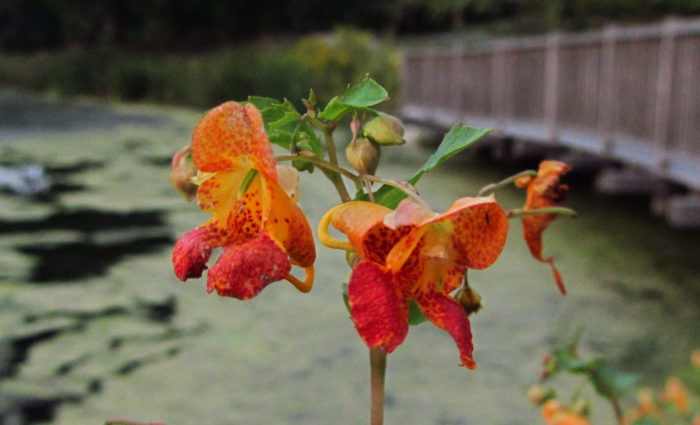





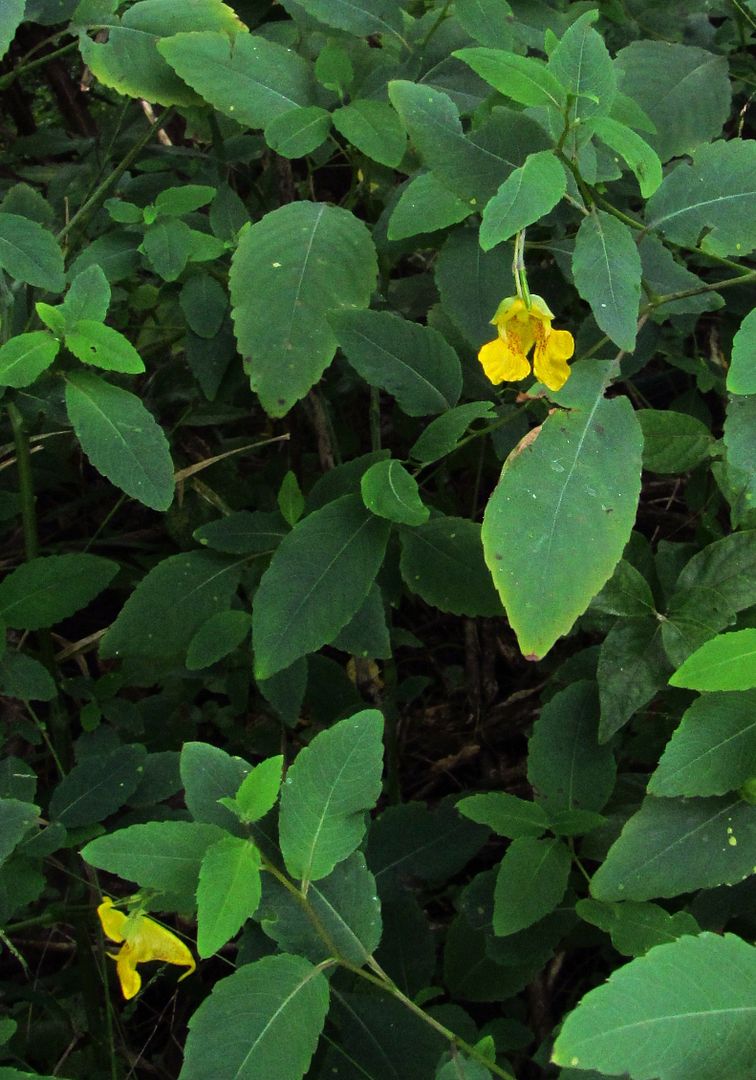
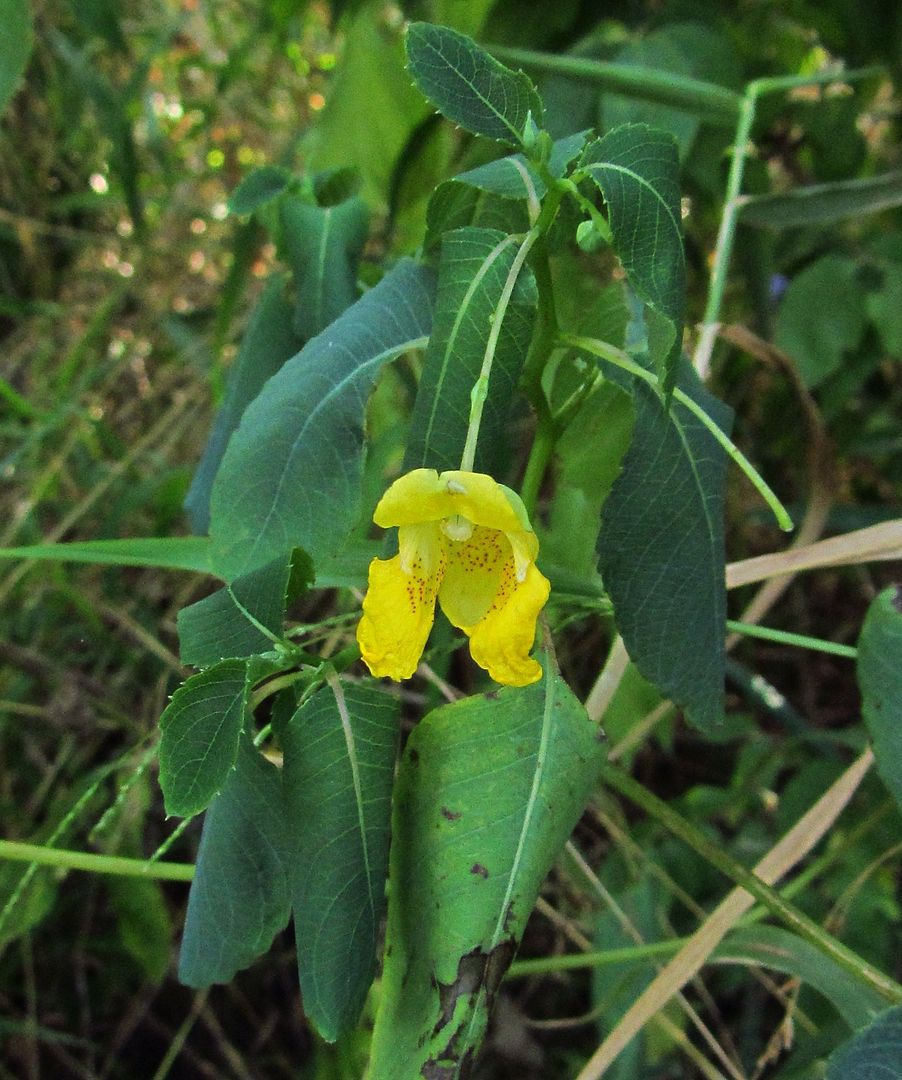
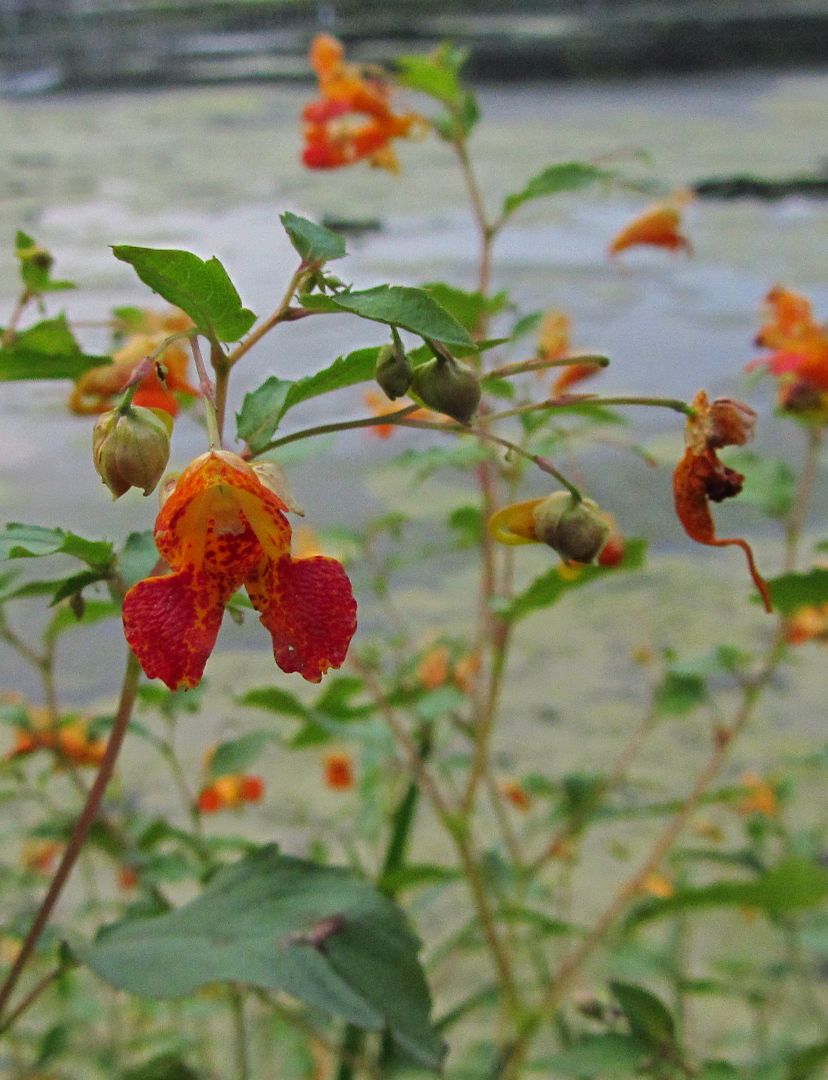

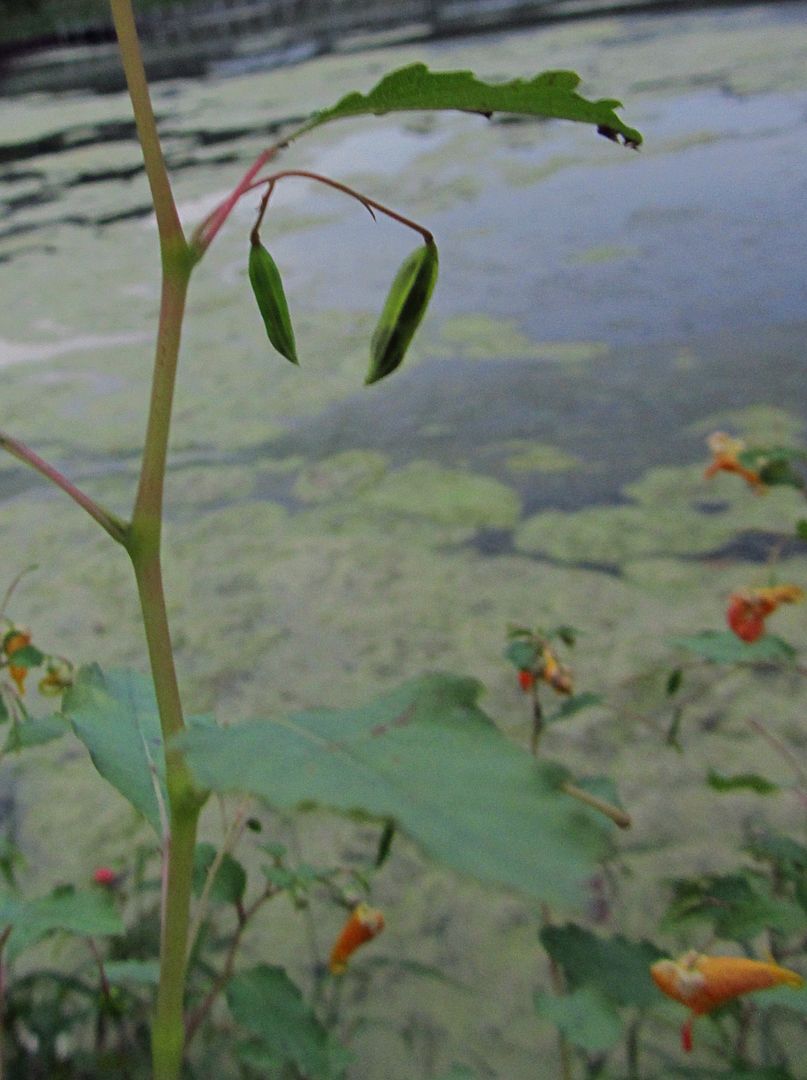
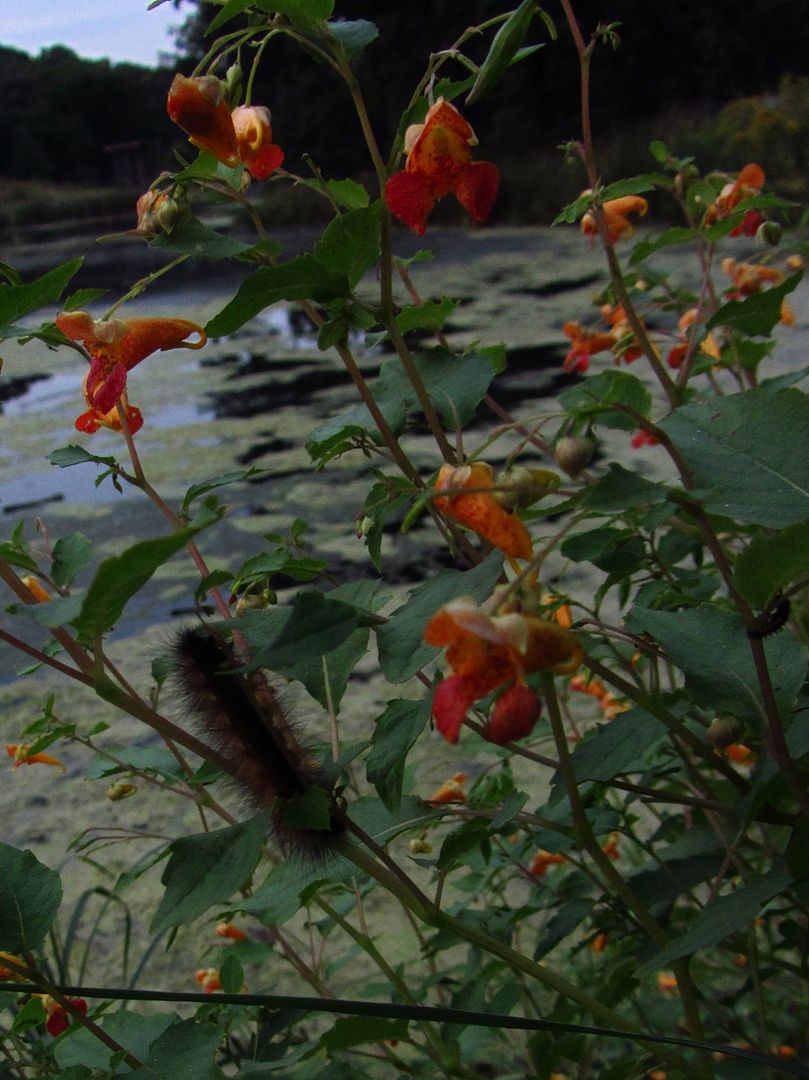
1 Comment
Jewelweed
It’s great to see good photos of both jewelweeds for comparison — thank you. Jewelweed products, including salve and soap, are available online but can be pricey.
PrairieFan Thu 14 Sep 1:13 AM